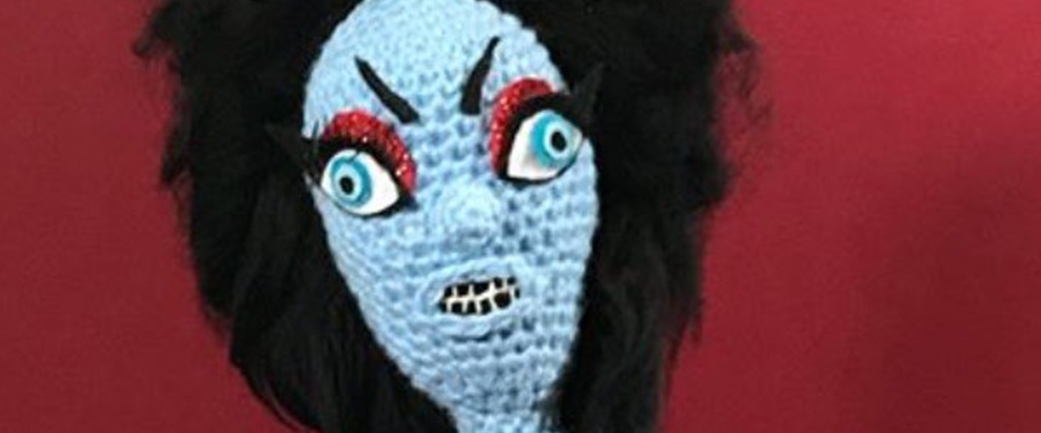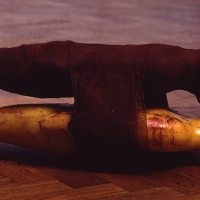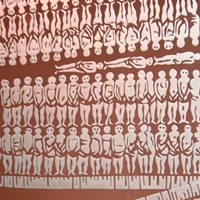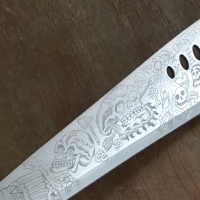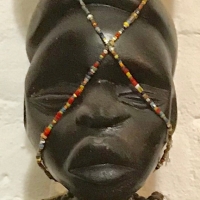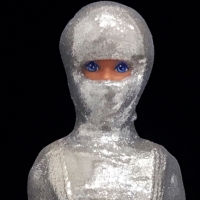
Contemporary artists share their personal talismans both made and found
I have had only one object that’s been consistent in my life, one thing I’ve kept when I’ve moved or minimalized my studio or home, and that’s the bowling ball I found walking home from school one afternoon in 1980 in New York City. I don’t like “yesterbating.” I’m not sentimental with photos or objects, and I prefer not to celebrate any holidays or birthdays or weekends. Time and space to me have the same meaning of celebration; lightness and darkness, day and night are just a continuous scroll in life’s picture book. It’s not something that’s fair to translate to you all, but my personal mythology and the strength that I derive from this object I found and admire is inexplicable and should remain so. Although at the Rubin’s kind request I’ll try.
If I were to analyze the fixation with the black ball it originated growing up at the beach in Southern California. The black sun or black sphere that lived on a yellow flag that was posted at the shore’s edge meant simply “dangerous waters.” It was the only time I ever listened to a warning—seeing this black ball—because I could visibly see the evidence of danger a few feet away. The ocean was usually in a fit of rhinoceros tossing waves and mountains of water coming at you, or bright red water filled with an eerie tide, or swirling undertones that were always thought of as deadly. The only people that ignored the black ball were surfers. It was always a joy to see them navigate the empty waters, cutting up a rug, a wet rug of tubes and foam.
When I moved to New York I had a habit of naming the beach cities when I crossed streets, usually traveling uptown or downtown. It was impossible to erase the geography. I’d start at the Palos Verdes point, where you could see the SS Dominator shipwreck, the most southern part in the crown of the queen’s necklace, a name for the bay itself . . . onto its most northern point past Malibu, Point Dume, although there wasn’t ever anything past Malibu as far as I was concerned. One thing all the beach towns had in common was respect for the weather. The sightings of the black ball signified something.
I have young artists in my life now who say they have no personal mythology, who say they have erased their memory of their past to focus intently on the present. What finding this bowling ball did for me the day I found it was to invent a language to describe my practice: “availabism” was born. Availabism means someone who makes the best use of what’s available. I thought that my friend Edgar Oliver’s philosophy about Poubella—Goddess of the Garbage Can—was something that felt right to pray for. It was like we had none of our own indigenous mythologies to help tell our stories, so we were slowly erecting a new vocabulary to articulate our interdisciplinary medium. “Pray to Poubella, Goddess of the Garbage, to find a microphone for the concert tomorrow night” is an example of practicing this principle.

Do I imbue my ball now with power? Is it an object that I hold sacred? I’d have to say yes. So much so that at one point the ball felt alive, and I wanted to get a mate or a sibling for it. I walked into a bowling alley near me on 14th Street and literally walked out with one. Such a foolish thing to do. I brought it home and it felt like I had a kitten who screamed for a sister or brother. So I had a pair now. Mind you these black balls were the only things in my studio. No chairs, no tables, no couch, no pictures on the wall—just the balls. I hid everything I used behind closed cabinet doors. Paint or clothes and shoes. But being minimalist has always been important to me. For some reason being a collector felt like it would interfere with new ideas. I liked the idea of looking at just one thing for a long time, problem solving, imagining. I had the balls in a corner and just stared at them.
I did many art projects with these bowling balls. My favorite was tying them to my feet and walking on them. Being a surfer in the early days had prepared me for balance. Being bereft of any surfing beaches close by and not having an outdoorsy life in New York, I imagined the term “anti-naturalism” to describe my relationship to making friends with urban surroundings. I surfed on the balls. I worked out at night. I called working out in blackness at night “gothletics.”
This black ball began what I can say is the foundation for much of my language that I still believe in and use to describe my art practice. I was brought up without any religion or ceremony, and I gravitated always to ritual and ceremony to share stories, also known as performance art in 2018. I walked in bowling balls and people saw this performance and responded to it. One friend crocheted a doll of me in my The Voluptuous Horror of Karen Black costume with bowling balls taped to my feet. The doll was an object that I didn’t give away or share immediately, and that’s very rare for me. I still have the bowling balls and the doll.
So this black ball, which came to life in the form of a bowling ball, or black sphere, that later became balls that I tied to my feet as in the Hans Baldung painting of the same subject—only his woman in his painting was a witch and she was punished by wearing black metal round black balls—gave me power because I accomplished a feat in them, no pun intended there. I stood up and sang. I can say doing extreme performance has black balled me, devalued me, but I’ve learned never to listen to or read the creepy outside mean-spiritedness about the work I do, or about what I consider to be beautiful, like the black sun.
So in a way this black sphere sent me through a liminal phase of powerful thoughts and actions that culminated in many, many live performances and drawings. I formed the philosophies that I put into practice. Got the courage not to care what others said. The black ball itself was the trigger that set my life upon a certain course, and as much as I’d like to think this black ball is not so special, it is—to me and to a couple of folks that have seen the performances with the bowling balls. Croshame knitted the doll that I love. She’s always a part of the band now, and it’s like the ball itself has a little fan club.
I write this almost four decades later, in an empty studio, with bookshelves that are naked, only one color in the place—tile red—three black cats, a bowling ball in the corner, no pictures cards or art collection. I feel wealthy with an abundance of new ideas still coming, and that’s what matters to me, believe it or not. I’m significantly and happily black balled.
About the Contributor
Kembra Pfahler is an artist and rock musician who moved from Los Angeles to New York City in 1979. She spent the 1980s making performances and Super 8 films and devoted herself to availabism, antinaturalism, and gothletics, the philosophies she still practices today. In 1990 Pfahler and Samoa Moriki formed The Voluptuous Horror of Karen Black, a theatrical death rock band. In the early aughts, Pfahler started exhibiting in the art world and performed internationally with the women in her band, the Girls of Karen Black.


